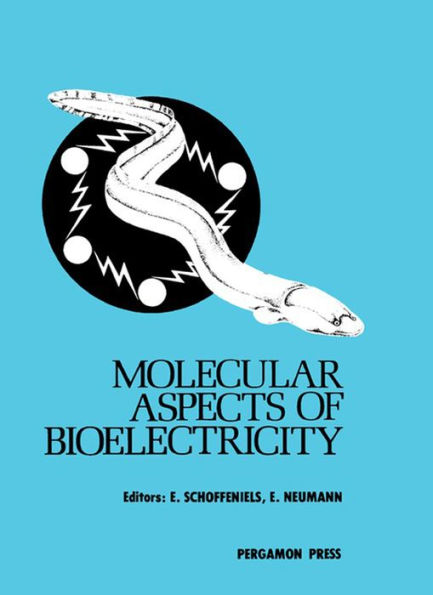Molecular Aspects of Bioelectricity
Molecular Aspects of Bioelectricity describes the self-organization in molecular and cellular networks. This book evaluates the chemical representation of ion flux gating in excitable biomembranes and addresses the theoretical implication of liganding reactions in axonal sodium channel gating. It also strongly demonstrates the ligand interactions of crustacean axonal membrane. The opening chapters deal with the biochemical studies of the structure, mechanism, and differentiation of the voltage-sensitive sodium channel; and biochemical cycle of impedance variation in axonal membranes. The succeeding chapters examine the effect of various compounds on the phosphorylation of nerve proteins and the molecular aspects of the actions of cyclic nucleotides at synapses. These topics are followed by discussions of the acetylcholine and choline acetyltransferase, as well as the polymorphism of cholinesterase in vertebrates. The closing chapters are devoted to the physical factors determining gated flux from and into sealed membrane fragments. The book can provide useful information to biologists, students, and researchers.
"1124728273"
Molecular Aspects of Bioelectricity
Molecular Aspects of Bioelectricity describes the self-organization in molecular and cellular networks. This book evaluates the chemical representation of ion flux gating in excitable biomembranes and addresses the theoretical implication of liganding reactions in axonal sodium channel gating. It also strongly demonstrates the ligand interactions of crustacean axonal membrane. The opening chapters deal with the biochemical studies of the structure, mechanism, and differentiation of the voltage-sensitive sodium channel; and biochemical cycle of impedance variation in axonal membranes. The succeeding chapters examine the effect of various compounds on the phosphorylation of nerve proteins and the molecular aspects of the actions of cyclic nucleotides at synapses. These topics are followed by discussions of the acetylcholine and choline acetyltransferase, as well as the polymorphism of cholinesterase in vertebrates. The closing chapters are devoted to the physical factors determining gated flux from and into sealed membrane fragments. The book can provide useful information to biologists, students, and researchers.
54.99
In Stock
5
1

Molecular Aspects of Bioelectricity
362
Molecular Aspects of Bioelectricity
362
54.99
In Stock

Product Details
| ISBN-13: | 9781483189857 |
|---|---|
| Publisher: | Elsevier Science |
| Publication date: | 04/24/2014 |
| Sold by: | Barnes & Noble |
| Format: | eBook |
| Pages: | 362 |
| File size: | 8 MB |
From the B&N Reads Blog
